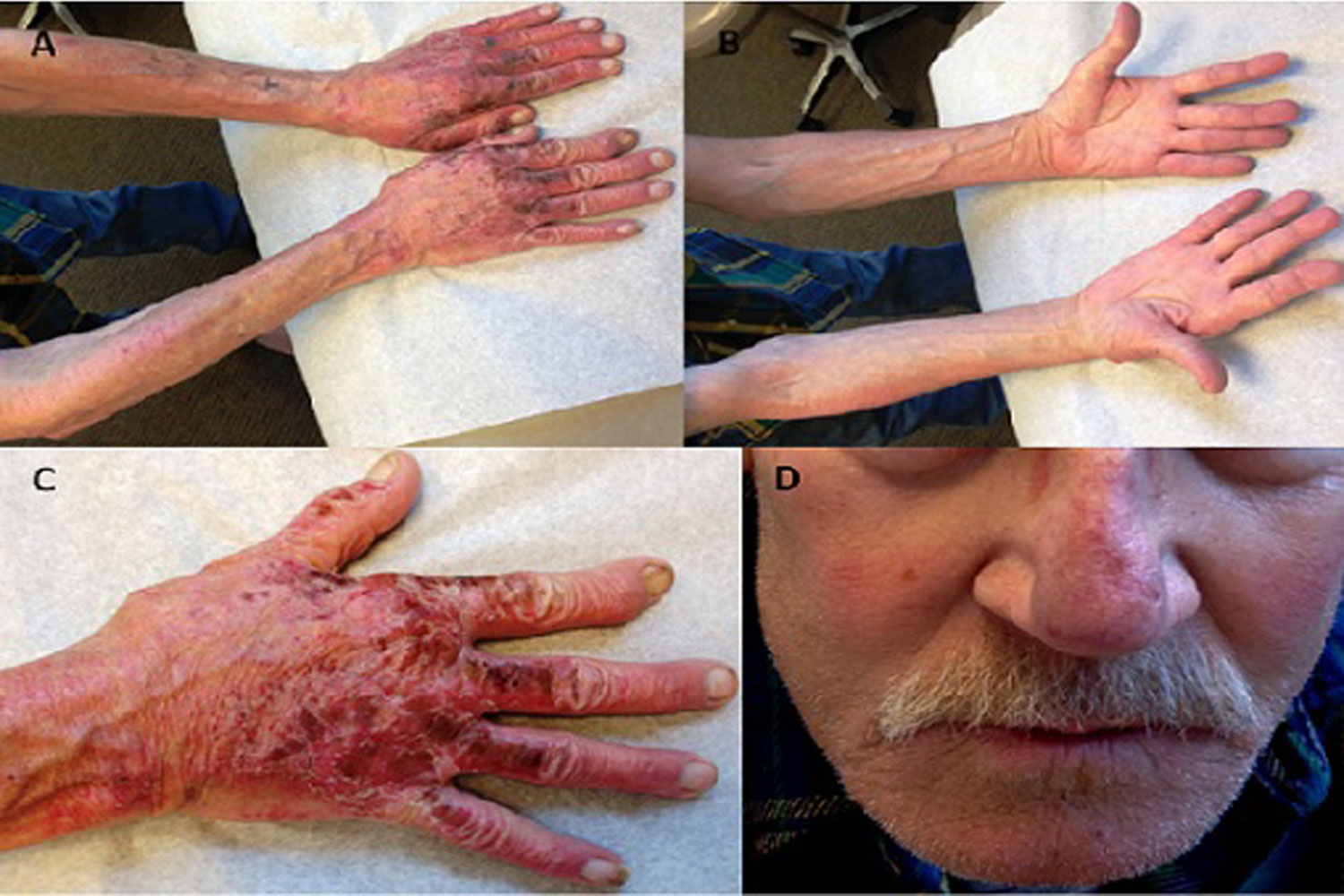2376-0249
Medical Image - International Journal of Clinical & Medical Images (2014) Volume 1, Issue 3

Author(s): Int J Clin Med Imaging 2014
A 50 year man presented with complaints of redness, swelling and blistering rash over the dorsum of the hands, dorsal forearms (Figure 1A, C), bridge of nose and malar area (Figure 1D) which erupted 10 days back, about half an hour after exposure to sunlight. Ventral forearm was not affected (Figure 1B). He had never had similar problems before. Further questioning revealed that he had been on doxycycline for the last 3 months as suppressive therapy for osteomyelitis. Based on history of exposure to doxycycline and distribution of the rash (confined to sun exposed areas), a diagnosis of phototoxicity was made. Phototoxicity is a non-immunological reaction to sunlight in response to agents that are activated by ultraviolet (particularly UVA) light to generate reactive oxygen species which damage cell membranes. Systemic drugs that cause phototoxicity include tetracyclines (doxycycline), thiazides, phenothiazines (chlorpromazine), antifungals (voriconazole and griseofulvin), fluoroquinolones, retinoids, nalidixic acid and nonsteroidal anti-inflammatory drugs (piroxicam and ketoprofen). Clinically, photototoxic reaction appears like exaggerated sunburn. It usually evolves within minutes to hours after exposure to sunlight, and in severe cases develops into vesicles and bullae. Our patient was treated by stopping doxycycline, and prescribed a combination of H1 (loratidine) and H2 receptor blockers (ranitidine), topical emollient and oral prednisone (20 mg daily for 5 days) and advised to avoid sun exposure. On follow-up his symptoms had improved.
Corresponding author
Subhankar Chakraborty
Department of Internal Medicine
University of Nebraska Medical Center
USA
 Awards Nomination
Awards Nomination

